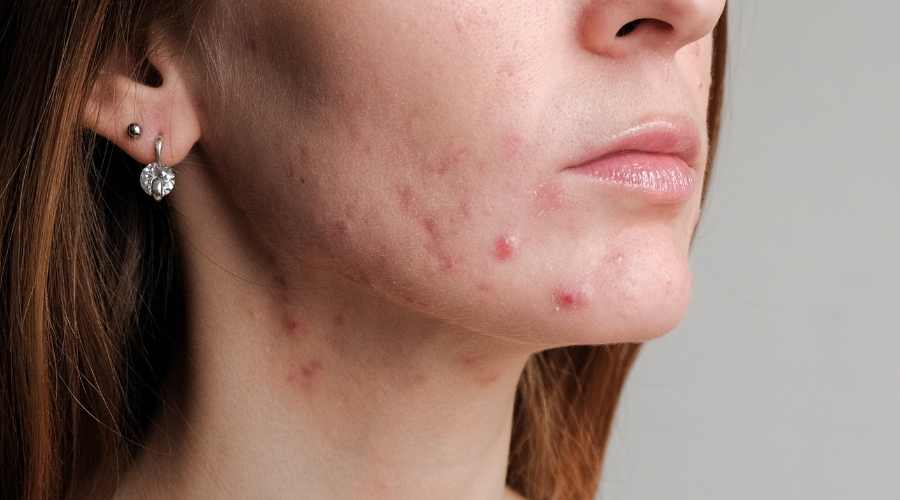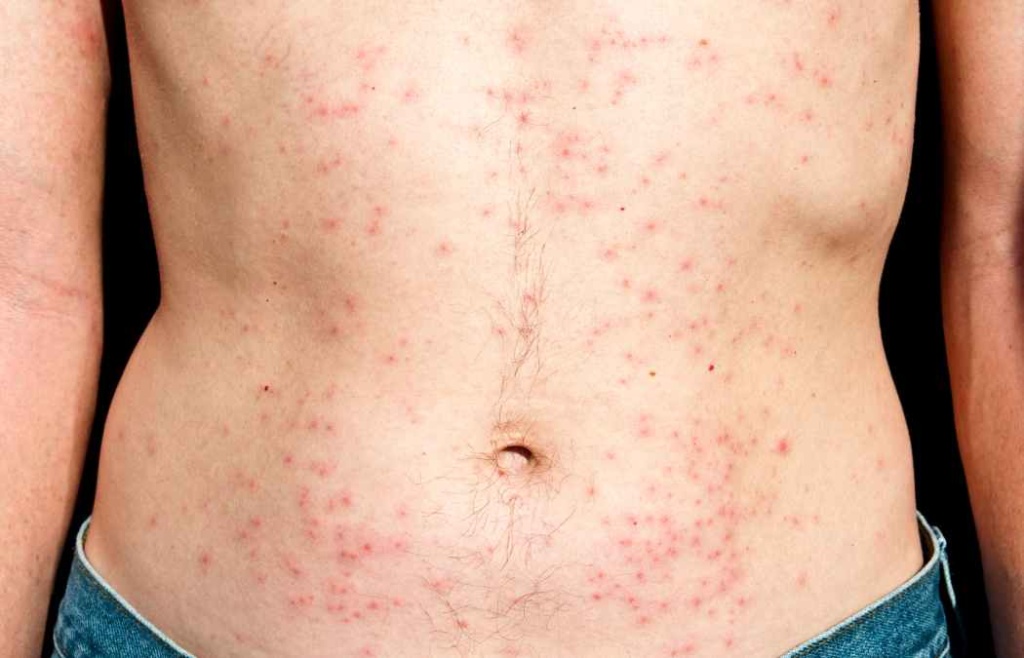Best Moisturizers for Fungal Acne 2024 [UPDATED]: Safe Options
If you are looking for a fungal acne safe moisturizer you are in the right place.
You might be struggling with fungal acne treatments. We know how frustrating it can be to find the right skincare products for your sensitive skin. You’ve probably tried countless treatments and moisturizers, only to end up with a face that’s still irritated and unhappy.
In this guide, we’ll help you choose the right fungal acne moisturizer. You can learn how to choose the best moisturizer for fungal acne by visiting the page.
Below we will also show you fungal acne skincare routines that work, we will look at what is fungal acne so you can understand this condition further and we will show you how to moisturize your skin safely.
We’ll look into the importance of keeping your skin hydrated, especially if you have dry skin, and discuss various acne treatments that are gentle yet effective.
Skincare can be tricky, but we’ll cover all the basics: our goal is to help you achieve clear skin without compromising your skin’s health.
So, let’s jump right in and explore some top-notch, fragrance-free moisturizers that will hydrate your skin without feeding the fungus. We suggest you check the table of contents below as there’s important information that can be very helpful.

AFFILIATE COMMISSION DISCLAIMER: I may earn a commission from affiliate links in this article at no extra cost to you.
Best Moisturizers for Fungal Acne
We’ve handpicked some top-rated, fungal acne-safe (FA-safe) moisturizers that will keep your skin hydrated without causing any irritation or breakouts.
These moisturizers cater to acne-prone skin and will support your fungal acne journey towards healthier-looking skin.
Fungal Acne Safe Moisturizer Top Picks
1. Gel Moisturizers (Because they’re lightweight)
1.1. Hada Labo Skin Plumping Gel Cream
| Key Ingredients | Benefits |
|---|---|
| Hyaluronic Acid | Retains moisture and plumps the skin |
| Glycerin | Attracts water to the skin for hydration |
Hada Labo Skin Plumping Gel Cream is a lightweight, fragrance-free face moisturizer that’s perfect for fungal acne-prone skin. It’s formulated with hyaluronic acid and glycerin to provide intense hydration without clogging pores or feeding the yeast associated with fungal acne. Massage it into the skin after cleansing to keep the skin soft and supple.
1.2 . Clear Face Care Gel
| Key Ingredients | Benefits |
|---|---|
| Aloe Vera | Soothes irritated skin and promotes healing |
| Allantoin | Supports skin barrier function and reduces redness |
Clear Face Care Gel is a gentle, FA-safe gel moisturizer that’s ideal for acne-prone and irritated skin. It’s non-greasy and absorbs quickly, leaving the skin feeling refreshed and hydrated. This moisturizer also contains aloe vera and allantoin to help soothe inflammation and support the skin’s natural barrier.
2. Urea Moisturizers (Because they exfoliate and hydrate)
Urea moisturizers are an excellent option for fungal acne due to their gentle exfoliating and hydrating properties. They help remove dead skin cells without feeding the yeast, that can lead to fungal acne. Look for products containing 5-10% urea for best results.
3. Squalane Oil
Using Squalane Oil as a moisturizer
| Key Ingredient | Benefits |
|---|---|
| Squalane | Hydrates the skin and mimics natural oils |
Squalane oil is a lightweight, FA-safe moisturizer that’s suitable for acne-prone skin. It provides hydration without clogging pores or contributing to oil production. You can use squalane oil on its own or mix a few drops with your favorite moisturizer for an extra boost of hydration.
Benefits for acne-prone skin
- Lightweight and non-greasy
- Doesn’t clog pores or contribute to oil production
- Helps maintain a healthy skin barrier
Incorporating one of these top recommended moisturizers into your skincare routine will create a protective barrier on the skin that helps keep fungal acne at bay.
No matter which product you choose, make sure it aligns with your skin type and fungal acne-safe requirements for the best results.
For a comprehensive fungal acne skincare routine, check out the video below.
Additional Products & Tips for Fungal Acne Care: A Dermatologist’s Guide
While the recommendations provided above offer a solid foundation for tackling fungal acne, there’s always more to explore in the realm of fungal acne. Take a look at the video below, where a dermatologist shares product suggestions to enhance your fungal acne care routine further.
Find below a timestamped breakdown of key takeaways from the fungal acne treatment video.
- 01:05 🧴 Nizoral shampoo with 1% ketoconazole is a must-have product to treat fungal acne, even for face, chest, or back.
- 02:01 🧼 Vanicream Z-Bar with zinc pyrithione is an effective and affordable cleanser for fungal acne treatment.
- 03:27 🎭 Sulfur masks, like AcneFree and Peter Thomas Roth options, are beneficial for both fungal acne and traditional acne.
- 05:21 🌞 A morning routine involves cleansing with Z-Bar, while an evening routine includes Nizoral shampoo for hair and face, followed by a sulfur mask, and finishing with an oil-free moisturizer.
- 07:44 💡 Consult a dermatologist before starting any medication or treatment for fungal acne.
Others’ Insights on Fungal Acne-Safe Moisturisers
Some valuable insights on the topic:
- Allure – “Fungal acne isn’t acne at all – it’s pityrosporum folliculitis (PF), which is the inflammation of hair follicles due to an overgrowth of yeast. Fatty acids, on the other hand, feed PF, says Jennifer Chwalek, a board-certified dermatologist at New York City’s Union Square Laser Dermatology. So products spiked with linoleic, oleic, stearic, palmitic, myristic, and lauric acids could exasperate fungal acne. Many of these are naturally found in coconut oil, so you can also add that to the list of ingredients to avoid.” Read more
- Reddit’s r/Fungalacne Subreddit – A vibrant discussion where users exchange experiences and recommendations for fungal acne-safe moisturisers. Join the discussion.
- Reddit User Review on JKossmune’s Moisturizer – A detailed account of a user’s experience with the Kosmetic Immunity Luminous Skin-Defense Moisturizer. Highlighting its main ingredient, Beta-Glucan, derived from the Schizophyllan mushroom. Read the user’s experience.
Understanding Fungal Acne
Fungal acne isn’t your typical type of acne, and treating it requires a slightly different approach.
Understand the difference between fungal acne and closed comedones.
1. What Causes Fungal Acne?
Fungal acne, also known as Pityrosporum (Malassezia) folliculitis, is caused by an overgrowth of yeast, which is usually kept in check by our skin’s natural barrier. But sometimes, factors like a compromised skin barrier or certain environmental conditions can cause this yeast to go haywire, leading to acne-like breakouts.
If you’re dealing with fungal acne, it’s crucial to use products that are safe for fungal acne-prone skin. This means avoiding ingredients potentially feeding the yeast and worsening the condition.
Instead, focus on treating fungal acne with gentle, yet effective ingredients like tea tree oil (always patch-test for possible allergies). Above we chose what we believe are the best fungal acne safe moisturizers to support your skin barrier without causing any irritation, making them perfect for sensitive skin types and acne-prone individuals.
2. Fungal Acne Symptoms
Knowing the symptoms will help you differentiate fungal acne from other types of acne and ensure you’re treating your skin with the right products.
2.1 Identifying Fungal Acne

Fungal acne can sometimes be mistaken for bacterial or other skin conditions because it looks similar. However, there are a few key differences that can help you identify whether you’re dealing with fungal acne or not.
2.2 Common Symptoms to Look Out For
Here are some common symptoms of fungal acne that will help you recognize it:
- Small, uniform bumps: Fungal acne usually appears as tiny, uniform, pus-filled bumps that are often clustered together. These bumps can be itchy and are typically found on the forehead, chest, back, or along the hairline.
- Itchiness: Unlike regular acne, fungal acne is often itchy. If you find yourself constantly scratching at your breakouts, it could be a sign that you’re dealing with fungal acne.
- Unresponsive to traditional acne treatments: Fungal acne doesn’t respond well to traditional acne treatments like benzoyl peroxide or salicylic acid. If you’ve tried these treatments with little or no improvement, it might be time to consider the possibility of fungal acne.
- Worsens with humidity and sweat: Fungal acne tends to flare up in hot, humid environments or when you’re sweating a lot. If your acne worsens during these conditions, it might be fungal acne.
- Improvement with antifungal treatments: If your acne shows significant improvement after using antifungal treatments like ketoconazole or tea tree oil, it’s a strong indicator that you’re dealing with fungal acne.
Remember, if you suspect fungal acne, it’s always best to consult a dermatologist for an accurate diagnosis and personalized treatment plan.
Once you’ve identified fungal acne, you can focus on using the right fungal acne safe products to help clear your skin and prevent future breakouts.
Moisturizing Fungal Acne-Prone Skin
Keeping your skin hydrated and maintaining a healthy skin barrier is essential when it comes to treating fungal acne.
This section will discuss the importance of moisturizing and how to choose the right fungal acne-safe moisturizer for your skin.
1. Importance of Moisturizing
1.1. Maintaining skin hydration
Fungal acne-prone skin needs hydration just like any other skin type. When your skin is well-hydrated, it’s less likely to become irritated and prone to breakouts. Dehydrated skin can also lead to an overproduction of oil, which can contribute to acne flare-ups.
1.2 Balancing skin’s natural barrier
Moisturizing helps maintain a healthy skin barrier function, which is crucial for keeping fungal infections at bay. A compromised skin barrier can exacerbate fungal acne and lead to increased skin irritation.
2. Choosing the Right Moisturizer
How to select a fungal acne-safe moisturizer
When looking for a fungal acne-safe moisturizer, paying attention to the ingredients is essential.
Here’s a quick guide on what to look for and what to avoid:
Ingredients to Look For:
| Ingredient | Benefits |
|---|---|
| Hyaluronic Acid | Helps retain moisture in the skin, making it an excellent choice for dehydrated skin. |
| Urea | Gently exfoliates dead skin cells and hydrates the skin without feeding the fungus. |
| Squalane | Mimics the skin’s natural oils, providing hydration without clogging pores. |
| Glycerin | A humectant that attracts water to the skin, promoting hydration. |
Ingredients to Avoid:
| Ingredient | Reason to Avoid |
|---|---|
| Fragrances | Can cause skin irritation, especially for sensitive and acne-prone skin types. |
| Heavy Oils | Can exacerbate fungal acne by providing a food source for the yeast. |
| Fatty Acids | Certain fatty acids can promote fungal growth, worsening fungal acne. |
Tips for choosing the right moisturizer
- Opt for fragrance-free and non-comedogenic products.
- Look for lightweight, gel-based moisturizers that won’t clog pores.
- Check the ingredients list for any known fungal acne triggers.
- When selecting a moisturiser, consider your skin type (normal, oily, dry, or combination).
When it comes to treating fungal acne, it’s crucial to choose the right makeup products and skincare routine.
By selecting a fungal acne-safe moisturizer that suits your skin type, you’ll be well on your way to maintaining a healthy skin barrier and controlling breakouts.
Fungal Acne Safe Skincare Routine

Now that you’ve got the inside scoop on the best fungal acne-safe moisturizers, it’s time to build a skincare routine that caters to your acne-prone skin.
A consistent and well-planned skincare routine is essential for keeping your skin happy, healthy, and protected from fungal overgrowth.
Building a Skincare Routine
Importance of a consistent routine for acne-prone skin
Having a consistent skincare routine helps maintain your skin’s natural barrier, reduce acne breakouts, and improve skin texture.
Choosing the right products that suit your skin type and address any specific concerns, including fungal acne, is essential.
Steps to Build a Fungal Acne-Safe Skincare Routine
- Cleanser: Choose a gentle, FA-safe cleanser that removes dirt and excess oil without stripping the skin of its natural moisture.
- Treatment: Incorporate treatments targeting fungal acne, such as antifungal ingredients like tea tree oil or ketoconazole.
- Hydration: Use a hydrating product containing hyaluronic acid to help your skin hold moisture and stay plump.
- Moisturizer: Select a fungal acne-safe moisturizer (as discussed in the previous section) that suits your skin type and keeps your skin hydrated and protected.
- Sunscreen: Protect your skin with a non-comedogenic, FA-safe sunscreen during the day.
Safe Products for Acne-Prone Skin
Fungal Acne-Safe Products to Incorporate into Your Routine
Hyaluronic Acid
| Benefits |
|---|
| Retains moisture and plumps the skin |
Hyaluronic acid is a must-have for all skin types, including dry skin types and acne-prone skin. It helps provide the skin with much-needed hydration without leaving any greasy residue.
FA-Safe Cleansers
| Benefits |
|---|
| Gently cleanse the skin while protecting its natural barrier |
Choose a gentle, FA-safe cleanser that effectively removes impurities without disrupting your skin’s natural barrier. Look for fragrance-free options that are specifically formulated with acne-prone skin in mind.
Fungal Acne Treatments
| Benefits |
|---|
| Target fungal overgrowth and prevent breakouts |
Incorporate products with antifungal properties, such as tea tree oil or ketoconazole, to help prevent and reduce fungal acne breakouts. These treatments can be used alongside traditional acne treatments for acne vulgaris, like salicylic acid or benzoyl peroxide, to address both types of acne.
By building a well-rounded, fungal acne-safe skincare routine, you’ll be well on your way to achieving smooth skin that’s free from breakouts. Just remember, consistency is key, and always keep your skin type and specific concerns in mind when selecting the right products for your routine.
Conclusion
And there you have it! We’ve covered everything you need to know about the best moisturizers for fungal acne, from understanding the condition itself to selecting the perfect FA-safe products for your acne-prone skin.
Remember, choosing fragrance-free, non-comedogenic, and fungal acne-safe products is essential to keep your skin happy and healthy.
While we’ve provided you with a list of top-rated moisturizers, don’t be afraid to experiment and find the perfect fit for your individual needs. Everyone’s skin is unique, and what works for one person may not work for another.
It’s all about trial and error until you discover the ideal product combination that works for you.
So, try these protective moisturisers, keeping in mind your skin type and the importance of maintaining a consistent fungal acne-safe skincare routine. Your skin will thank you for avoiding the wrong products and choosing those that cater to acne-prone skin without leaving any residue behind.
Here’s to a future filled with clear, healthy skin! Good luck on your skincare journey!
Frequently Asked Questions
1. What type of moisturizer is best for fungal acne-prone skin?
Gel moisturizers, urea moisturizers, and squalane oil are excellent options for fungal acne-prone skin. These moisturizers are typically lightweight, non-greasy, and hydrating without feeding the yeast that can cause fungal acne.
2. Can I use hyaluronic acid if I have fungal acne?
Yes! Hyaluronic acid is safe for fungal acne-prone skin, as it helps hydrate and plump the skin without promoting fungal growth. It’s a great addition to your skincare routine for maintaining skin hydration.
3. What causes fungal acne, and what are its symptoms?
Fungal acne, also known as Malassezia folliculitis, is caused by an overgrowth of yeast (Malassezia) that naturally resides on the skin. Common symptoms include small, uniform, itchy bumps, often found on the chest, back, and forehead.
4. Are there specific ingredients I should look for in a fungal acne-safe face moisturizer?
When choosing a fungal acne-safe face moisturizer, look for non-comedogenic, fragrance-free, and oil-free formulations. Ingredients such as urea, squalane oil, and hyaluronic acid are great choices for fungal acne-prone skin.
5. How do I know if a product is fungal acne-safe?
To determine if a product is fungal acne-safe, check the ingredient list for any ingredients that may promote fungal growth or exacerbate acne-prone skin. Look for products that are labeled as non-comedogenic, oil-free, and fragrance-free.
6. Can you provide a list of the best moisturizers for fungal acne?
Some of the best moisturizers for fungal acne include Hada Labo Skin Plumping Gel Cream, Clear Face Care Gel, urea-based moisturizers, and squalane oil. These moisturizers are designed with acne-prone skin in mind and are considered safe for those with fungal acne.
7. Is changing my entire skincare routine necessary if I have fungal acne?
It’s essential to ensure that all your skincare products are fungal acne-safe to prevent further irritation and breakouts. This may involve changing some or all of your products to ensure they’re safe for your acne-prone skin.
Also, read my article on Best Face Wash for Fungal Acne
References
- Rubenstein RM, Malerich SA. Malassezia (Pityrosporum) Folliculitis. J Clin Aesthet Dermatol [Internet]. 2014 [cited 2023 Sep 14]; 7(3):37–41. Available from: https://www.ncbi.nlm.nih.gov/pmc/articles/PMC3970831/.
- Özel Şahin G, Toka Özer T, Durmaz S. Investigation of fungus at stratum corneum of patients with acne vulgaris. Microbial Pathogenesis [Internet]. 2023 [cited 2023 Sep 14]; 175:105982. Available from: https://www.sciencedirect.com/science/article/pii/S0882401023000153.
- Sharquie KE, Al-Hamdi KI, Al-Haroon SS, Al-Mohammadi A. Malassezia Folliculitis versus Truncal Acne Vulgaris (Clinical and Histopathological Study) [Internet]. 2012 [cited 2023 Sep 14]; 2012. Available from: http://www.scirp.org/journal/PaperInformation.aspx?PaperID=26149.
- Pretsch A, Nagl M, Schwendinger K, Kreiseder B, Wiederstein M, Pretsch D, et al. Antimicrobial and Anti-Inflammatory Activities of Endophytic Fungi Talaromyces wortmannii Extracts against Acne-Inducing Bacteria. PLOS ONE [Internet]. 2014 [cited 2023 Sep 14]; 9(6):e97929. Available from: https://journals.plos.org/plosone/article?id=10.1371/journal.pone.0097929.



